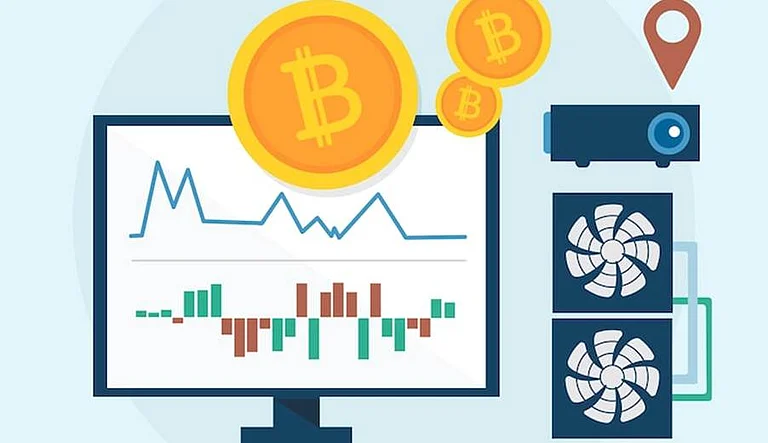Flash loan security is one of the most discussed concerns in DeFi. Flash loans provide traders and developers with huge amounts of instant capital with no collateral, given that repayments occur in the same transaction. While it greatly contributed to the rapid growth of DeFi, it introduced an immensely strong attack vector that is continuously used by cybercriminals. Understanding how flash loan attacks work, the vulnerabilities they target, and the mechanics defending against them is essential knowledge for developers, investors, and all navigating the crypto ecosystem.
The article will dive into the mechanics of flash loan exploits, review some of the largest attacks in DeFi history, explain the smart contract weaknesses that make these hacks possible, and give an overview of best practices for building secure DeFi applications. You will also learn about governance manipulation risks, price oracle attacks, and some practical defenses that modern protocols are implementing.
What are Flash Loans? A Brief Overview
Flash loans are uncollateralized loans that occur within one blockchain transaction. They exist because smart contracts can guarantee atomicity: either every step of the transaction succeeds, or it all reverts as if nothing happened.
Key features of flash loans
No collateral required
Must be repaid in the same transaction
Enabled mostly on networks such as Ethereum
Used for arbitrage, collateral swaps, liquidation strategies, and—unfortunately—attacks
Flash loans are not, in and of themselves, malicious. They are a tool. But their power makes them ideal for exploiting poorly designed DeFi protocols.
How Flash Loan Attacks Work?
Flash loan exploits are usually multistep operations designed to manipulate a protocol's logic using large sums of borrowed capital in one single blockchain transaction. Since there isn't any kind of upfront collateral required, the attacker may momentarily control millions of dollars, providing them with the capability to distort prices, drain liquidity, or exploit poorly designed smart contract mechanisms. While the makeup of every attack varies depending on the targeted protocol, most follow a common structure.
Typical Steps in a Flash Loan Attack
1. Borrow a large amount of crypto using a flash loan
The attacker starts this process by taking out a huge flash loan from any DeFi lending protocol, such as Aave or dYdX. Flash loans are a kind of instant loan where anyone can borrow funds without putting up any collateral; all they need to do is return the funds within one transaction block.
What it does:
The attacker gains immediate access to huge liquidity they don’t own.
This temporary capital gives them the leverage to disrupt markets or trigger faulty smart contract logic.
It removes the financial barrier to entry—making sophisticated exploits accessible to attackers with little or no starting funds.
2. Manipulate a system component: for example, price oracle, liquidity pool, or AMM pair
Using the borrowed capital, an attacker starts manipulating the protocol's internal pricing or logic by:
Artificial inflation or deflation of token prices in an AMM like Uniswap.
Overloading or corrupting a weak oracle relying on on-chain prices.
Pool balance manipulation to appear to have different token values.
Exploiting the TWAP or slow update of oracle prices.
Why this works:
Smart contracts trust whatever data they receive by default. If an attacker can distort data even for a few seconds, it can trick the protocol into making wrong calculations.
3. Exploit the manipulated state
After the protocol reaches an attacker-controlled state, the exploit is triggered. Depending on the vulnerability, this may include:
Draining liquidity pools through token swaps at artificially skewed prices.
Minting undervalued tokens that suddenly become hugely profitable after price manipulation is reversed.
Triggering cheap liquidations of other users' positions by manipulated collateral values.
Abusing flawed logics, which includes incorrect reward calculations, mispriced collateral, and over-issuance of synthetic assets; This represents the profit stage, wherein value is extracted by the attacker before the system returns to its usual state.
4. Return the flash loan in the same transaction
The attacker returns the borrowed amount plus fees after the exploit—within the same transaction block. If not, the whole transaction would fail as if nothing happens.
Outcome:
The loan is paid back immediately.
The attacker retains all the stolen assets or profits made from the temporary manipulation.
No trace of the borrowed capital remains in the system, because it was only used for a moment.
Why Flash Loan Attacks Are So Dangerous
Because this model doesn't require their own capital, it transforms individuals-even those with basic coding skills-into large-scale attackers. Traditional financial attacks require substantial funds, but flash loans eliminate that barrier entirely. Provided the attacker can find a weakness in the protocol's logic, they can weaponize millions of dollars for a few seconds-risk-free.
The Largest Flash Loan Exploits in DeFi History
Flash loan attacks represent some of the most devastating events in crypto. Below are notable incidents that shaped DeFi security discussions.
1. The bZx Exploits (2020)
bZx was targeted several times because of oracle manipulation. Using flash loans, attackers distorted the price of assets and managed to drain funds, which cost the protocol millions.
2. PancakeBunny Attack (2021)
A massive attack where a flash loan was used to manipulate BUNNY token price, which resulted in an asset loss of ~$45 million and a near-total collapse of the token.
3. Cream Finance Attack (2021)
Cream has been repeatedly hit with flash loan attacks. One incident resulted in over $130 million in losses via an elaborate exploit that included price manipulation and repeated borrowings.
4. Beanstalk Governance Attack (2022)
A flash loan allowed the attacker to buy the majority of governance tokens, propose a malicious proposal, and drain ~$182 million from the protocol.
5. Euler Finance Attack (2023)
It is one of the most sophisticated flash loan exploits, in which the attacker manipulated Euler's liquidation logic to drain $197 million. It was later partially reversed after negotiations.
These incidents thus underscore how flash loans can amplify minor contract flaws into catastrophic failures.
Smart Contract Vulnerabilities That Enable Flash Loan Hacks
Flash loans themselves do not break systems; vulnerabilities do. The attackers leverage weak design patterns, outdated assumptions, and incomplete security checks to execute exploits. Below are the most common weak points they target, each of which can be amplified by the massive temporary liquidity provided by flash loans.
1. Incorrect Price Feeds
This makes protocols relying on a single DEX price or an easily manipulable liquidity pool an immediate target. If an attacker uses the flash loan to move huge chunks of liquidity, it can artificially inflate or deflate token prices within seconds.
This incorrect pricing in turn gets directly fed into smart contracts, which assume the data is legitimate.
Why it's dangerous:
Even a momentary distortion can trigger faulty liquidations, mispriced swaps, or unfair minting.
The smart contracts most prone to these types of problems are those that do not employ decentralized or time-weighted price oracles.
2. Incorrect Usage of Validation Checks
Smart contracts that don't validate inputs, transaction states, or anticipated results leave gaps open to be exploited. Attackers can easily pass unexpected values, manipulate the sequence of function calls, or skip any safeguards because the contract does not check critical conditions.
Risks include:
Logic execution that shouldn’t be permitted
Arbitrary minting or burning functions being triggered
Circumvention of collateral requirements or withdrawal limits
Weak validation is basically giving attackers opportunities to twist normal operations into harmful outcomes.
3. Reentrancy Weaknesses
Reentrancy happens when a contract allows another function call to interrupt its execution before its internal state is updated. Attackers with flash-loan-funded liquidity are able to continually trigger malicious callbacks to drain funds, exploit reward loops, or withdraw more than allowed.
Why it matters:
Outdated or ill-structured contracts are more prone to
Attackers can manipulate states mid-transaction before the balances or conditions are corrected.
This makes reentrancy one of the most destructive vulnerabilities in DeFi.
4. Dependencies on timing
Some protocols assume operations happen in a well-defined order, or even over many blocks. Flash loans break that assumption by allowing enormous moves of capital within a single atomic transaction, rendering time-based logic unreliable.
Examples of timing risks:
Price oracles expected to update slowly
Contracts using outdated block timestamps
Multi-step processes which rely on market stability across blocks
It is when the system assumes timing stability that flash loans can collapse the intended logic instantly.
5. Overreliance on On-chain Market Conditions
In that sense, protocols relying on-chain liquidity pools as indicative of fair market values are vulnerable to this because flash loan borrowers can distort pool ratios dramatically. Even a small liquidity pool can be distorted with millions in borrowed funds.
Impact:
Temporary price misrepresentation affects swaps, lending, borrowing, and liquidations.
Smart contracts incorrectly calculate based on manipulated pool states.
This is why deeper liquidity or off-chain aggregated data is often recommended.
6. Unprotected Arbitrage and Reward Mechanisms
Some protocols provide arbitrage bonuses, staking rewards, or yield incentives based on conditions that attackers can artificially trigger. Flash loans allow attackers instantly to meet these conditions and claim rewards without real participation.
Example:
Farmers gain farming rewards by inflating the TVL for one block
Triggering bonus harvests or governance voting influence With no safeguards, economic manipulation becomes trivial.
7. Flawed Collateralization Logic
Protocols using instantly manipulable prices for the calculation of collateral or debt positions are vulnerable. An attacker can briefly inflate collateral values or deflate debt values for unfair liquidation or borrowing opportunities.
Risk:
Attackers walk away with borrowed assets while the protocol becomes undercollateralized. This forms a significant weakness in both lending and synthetic asset platforms.
Price Oracle Manipulation Using Flash Loans
One of the most frequent flash loan strategies is the manipulation of price oracles. If a protocol utilizes a DEX as a primary price feed, an attacker can move the market with a big flash loan, thus tricking the system into reading data that is not correct.
Common Methods of Oracle Manipulation
Large Swap Distortion: Using an enormous swap to distort pool price ratios
Low-Liquidity Pool Manipulation: Targeting smaller pools of tokens.
Single Oracle Dependency: Depending on one price source
Incorrect Time-Weighted Averages (TWAP)
Why It Works
DeFi protocols often assume that prices are a natural consequence of the market. Flash loans break that assumption by allowing temporary artificial price changes.
Flash Loans and Governance Manipulation: Risks Explained
Governance tokens grant voting power. If a protocol is not designed to require long-term token holding, a flash loan could temporarily give the majority needed for control.
How Governance Attacks Work
1. Flash loan of governance tokens
The attacker executes a flash loan to have temporary access to a huge volume of governance tokens and instantly gets influence without needing long-term ownership.
2. Obtain majority voting power
The attacker can overtake the legitimate voters and secure majority control for the duration of the transaction with such a large token balance.
3. Propose and immediately pass malicious changes
Having the majority power grants the attacker the ability to forcefully push damaging proposals through—like rule changes or disabling safeguards—without opposition.
4. Drain funds or modify parameters
Once the malicious proposal passes, an attacker may redirect protocol assets, change governance thresholds, or manipulate key settings for their benefit.
5. Return the flash loan
All borrowed tokens are returned within the same transaction, leaving the attacker with the stolen profits while their temporary voting power disappears.
This kind of attack is rare but highly destructive because it operates by abusing protocol-level trust.
How DeFi Protocols Defend Against Flash Loan Attacks
Over time, a number of measures have been implemented by DeFi that reduce the effect of flash loan–driven manipulation. These mechanisms improve the reliability of prices, restrict rapid exploitation, and ensure protocols cannot be easily influenced in one single transaction.
Common Security Mechanisms
Time-Weighted Average Price (TWAP) oracles
They smooth out temporary price fluctuations by using averaged data, making it more difficult for attackers to manipulate prices within one block.
Multi-source or decentralized oracles, such as Chainlink
Prices are pulled from multiple independent data feeds, reducing the chance that any single DEX or manipulated pool can distort the decisions of the protocol.
Rate limiting for sensitive functions
Some operations, such as the update of parameters or the execution of large trades, are restricted to prevent sudden large-scale manipulations.
Liquidity checks and slippage guards
The protocols check that the trades do not highly affect the balance of the pools to avoid attacks that would force extreme price deviations with borrowed capital.
Reentrancy protection
Smart contracts are designed to include checks that prevent reentrancy during execution, thereby preventing attackers from draining funds through recursive exploits.
Requiring governance token lock-up periods
Users will have to keep tokens for a certain period before their voting power becomes active, preventing malicious actors from flash-loaning tokens to hijack governance.
Flash-loan-resistant liquidation systems
Liquidation logic is designed to ignore short-term price distortions, which cannot be used to trigger unfair liquidations by attackers through momentary manipulations.
Comparison Table
Defense Mechanism | Prevents | Limitation |
TWAP Oracle | Price manipulation | Delayed price reaction |
Multi-source Oracle | Single feed dependency | More complex & costly |
Governance Token Lock-up | Governance attacks | Slower governance |
Reentrancy Guard | Repeated calls | Does not stop oracle attacks |
Slippage Barriers | Liquidity manipulation | May affect normal trades |
Security Best Practices for Flash Loan Developers
If your protocol interacts with flash loans—intentionally or otherwise—you need to design considering adversarial conditions.
Best Practices
Use decentralized, robust oracles
Implement TWAP or Chainlink oracle integrations
Test with simulated flash loan conditions
Add reentrancy guards (checks-effects-interactions pattern)
Add liquidity and slippage sanity checks
Require multi-step governance with delays
Perform comprehensive audits through renowned firms
Use bug bounties to incentivize ethical testing
Developer Tip:
Always assume that attackers have unlimited liquidity and will test every edge case your code leaves open.
What to Do If You Fall Victim to a Flash Loan Attack
Revoke token approvals: Use tools like Revoke.cash or Etherscan to block suspicious contracts.
Secure your wallet: Disconnect from dApps and move remaining assets to a safe wallet.
Report the incident: Notify the affected protocol and community channels.
Document transactions: Keep transaction hashes and contract details for reference.
Learn and stay vigilant: Review security practices, use hardware wallets, and follow trusted DeFi updates.
Even if funds can’t be recovered, acting quickly helps prevent further losses and strengthens future security.
Conclusion
Flash loans represent both the innovative potential and the inherent risk of decentralized finance. Their ability to provide instant, collateral-free liquidity has the power to empower traders and developers alike to execute sophisticated strategies within DeFi. Still, the same mechanism allows malicious actors to leverage this in ways that exploit vulnerabilities at previously unimaginable scales.
The first steps toward understanding flash loan security are to recognize how these attacks work, where the weaknesses they target occur, and the devastating consequences of failing to anticipate them. DeFi protocols can reduce the risk of flash loan exploits significantly by using robust oracle designs, proper smart contract validation, governance safeguards, and extensive testing.
And as the ecosystem evolves, so too does security. Flash loans are here to stay—they are part of the core architecture of DeFi. It falls to developers and auditors and the community at large to build systems resilient to manipulation, safeguard user funds, and engender trust in the decentralized financial infrastructure.
FAQs (Frequently Asked Questions)
1. What makes flash loans so attractive to attackers?
Flash loans give anyone access to millions of dollars in liquidity without collateral. If a protocol has even a minor weakness, attackers can exploit it using temporary capital and return the loan instantly, making the attack low-risk.
2. Are flash loans themselves dangerous?
No. Flash loans are neutral tools. The danger comes from weak smart contracts that can be manipulated using large, instant liquidity.
3. How do attackers manipulate price oracles using flash loans?
They perform large swaps to distort DEX liquidity pools. If a protocol reads prices directly from that pool, it is tricked into believing the manipulated price is real.
4. Why do DeFi protocols trust manipulated data?
Smart contracts cannot verify whether a price spike is real or artificial. They accept any on-chain input unless specifically designed to validate or cross-check it.
5. How can flash loans affect governance systems?
If governance tokens do not require a holding period, attackers can borrow them, gain majority voting power, pass malicious proposals, drain funds, and return the tokens—all in one transaction.
6. What types of vulnerabilities make flash loan attacks possible?
Common weaknesses include single-source price feeds, flawed validation checks, reentrancy bugs, timing assumptions, and improper collateral logic.
7. Can flash loan attacks be prevented completely?
Not entirely, but their impact can be heavily reduced. Robust oracles, time-weighted pricing, reentrancy guards, slippage controls, and governance delays are some effective defenses.
8. Why are small liquidity pools more vulnerable?
Because they can be moved significantly with a relatively small amount of capital. Flash loan borrowers can distort prices easily in pools with shallow liquidity.
9. What is TWAP, and how does it help?
A Time-Weighted Average Price oracle smooths out price changes over time, making it harder for attackers to manipulate prices within a single block.
10. How do attackers profit if they must return the flash loan immediately?
They make profits during the manipulated transaction — through underpriced minting, unfair liquidations, arbitrage differences, or drained liquidity — then repay the loan before the transaction ends.

























